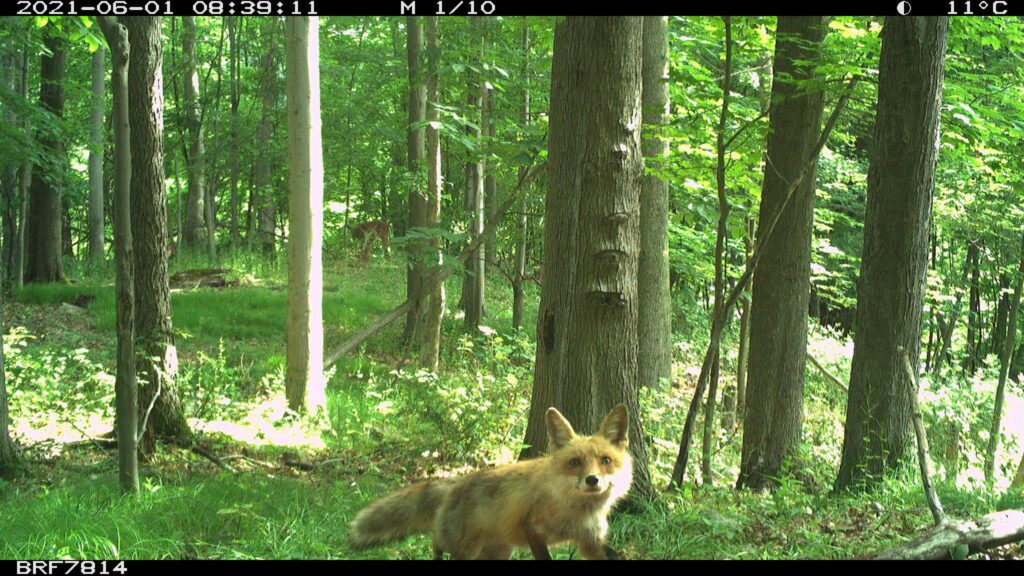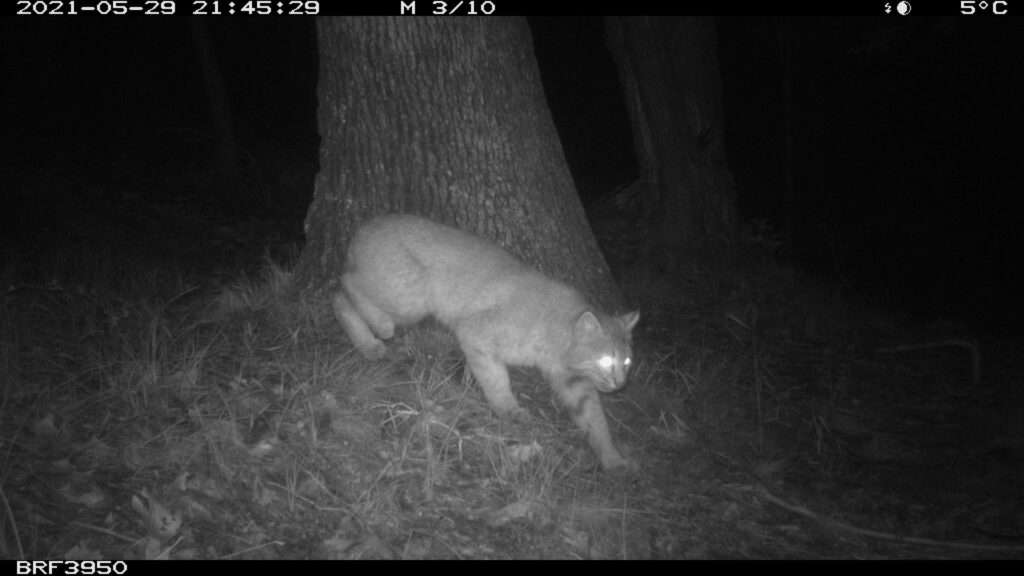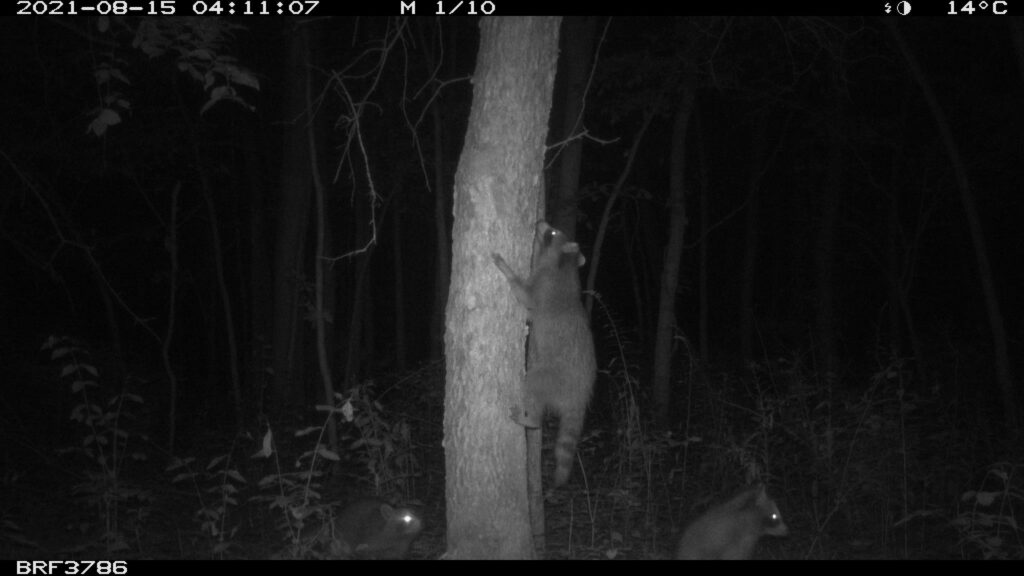Anna Soccorsi, a recent Columbia University master’s degree recipient, chats with Black Rock Forest’s Dr. Scott LaPoint about her journey and research findings on carnivores in the Hudson Valley.
(Scott LaPoint; SL): Hey Anna! Let’s get to it. Tell us what you discovered and why you think it’s important.
(Anna Soccorsi; AS): I found that medium-sized carnivores like coyotes and foxes limit their interactions with each other, allowing multiple species to coexist in the same landscape and informing our future land use management and conservation policies for an increasingly human-dominated planet.

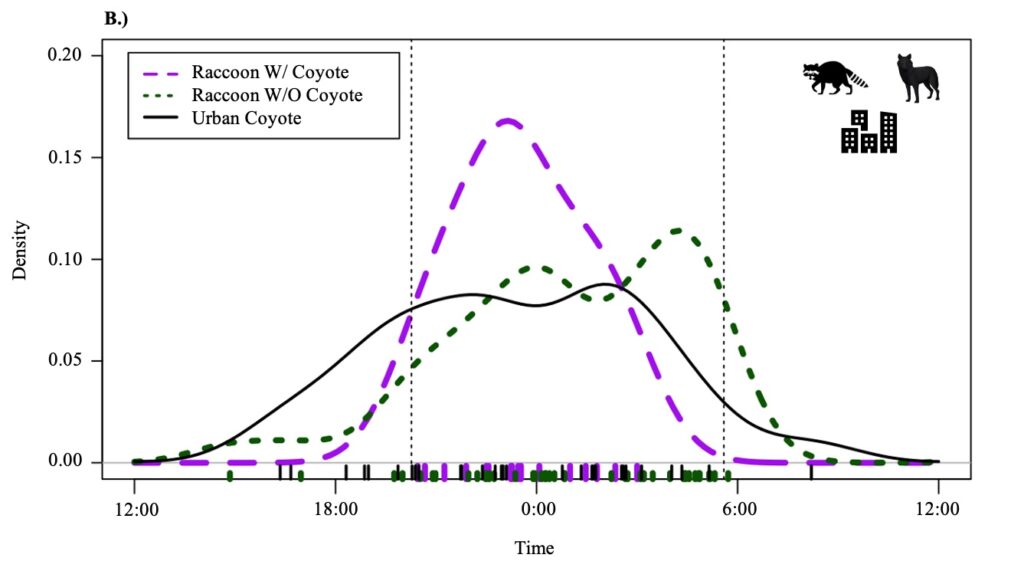
SL:Cool! I agree! So, you were a graduate student at Columbia University in Manhattan, so how did you end up here at Black Rock Forest?
AS: Yeah, it’s not obvious how someone would study carnivores from New York City, but I can attest that it’s totally possible.
My research journey with Black Rock Forest started when I began my master’s research. My department, Columbia’s Ecology, Evolution and Environmental Biology, has several research links with Black Rock so eventually I heard and learned about the camera trapping and carnivore work you guys were doing around the Hudson Highlands for the past few years. The project seemed incredibly interesting, so I reached out.
When I learned that you had several years of camera trapping data and a research grants program, I knew there was a great opportunity here for me to explore how these carnivores manage to survive. Plus, when we discussed how rare gray fox seemed to be, (my favorite carnivore!), and that you had no idea why, I was committed!
SL: Gray fox are awesome and we still don’t know why they appear to be declining around here. More research to be done!
AS: It’s definitely a mystery. Finding these “gray ghosts”, as we affectionately call them, has proven more and more difficult in recent years. I’m not exactly sure why, but I’m extremely determined to figure it out and help these wonderful animals can become less ‘ghostly’ moving forward.
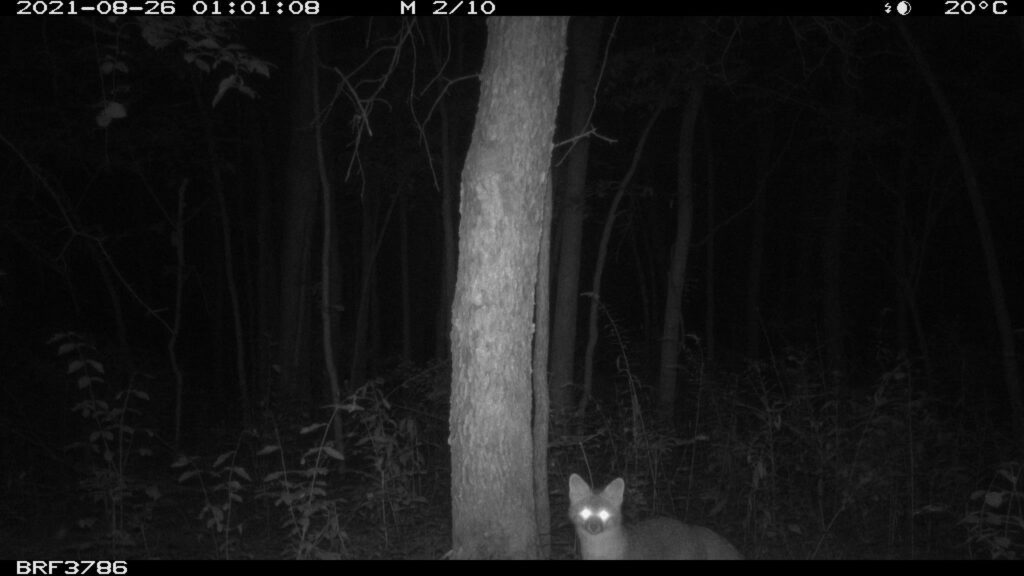
SL: It seems safe to say that you’d be happy learning about foxes for the rest of your career, but how did you get into wildlife ecology in the first place?
AS: My journey into wildlife ecology has not been incredibly straightforward.
I started at the University of Michigan and majored in environmental policy and communication, later spending several years interning for a renewable energy company to help identify suitable locations for solar farms. I also worked for a public relations company in New York City, where I developed a valuable skillset of creating thought leadership collateral, building strong communication and interpersonal skills, and working collaboratively alongside a diverse group of colleagues.
But I learned that the corporate lifestyle was not fulfilling for me and I wanted to get back to my true passion for environmental science and conservation ecology. That’s when I found the E3B program at Columbia University and decided to apply – the rest is history!
SL: Excellent. Not all paths our straight, mine included. And like you said, your journey gave you a lot of valuable experiences that others in ecology may not have.
So, tell us a bit about how you did your research. What’s a “camera trap”?
AS: My research involved deploying 40 motion-activated infrared camera traps along an urban-to-rural gradient in and near Newburgh, NY between May and September of 2021.
Camera traps are amazing tools that essentially take a series of photos when a heated moving object passes by, documenting when and where species are present. In October, I looked though over 100,000 pictures to identify species, count individuals, and extract the date and time of their visit for my data analyses. I then developed models that helped me explore how five carnivore species, including coyote, bobcat, raccoon, gray fox, and red fox, were temporally and spatially responding to their environment and each other.

SL: What is the most unique aspect of your project and how did you come up with it?
AS: I think the most unique aspect of my project is the broad survey of various levels of urbanization.
Most of the published work on these species has been done in more natural, forested landscapes, but we don’t really know if they exhibit a threshold response to human development and activity, at least not in New York. I think my project offers key insights in this regard thanks to the placement of camera traps in rural, semiurban and urban areas.
I came up with the idea by reading the work of other urban carnivore ecologists and brainstorming the study design concept with you in the early stages of my thesis development process.
SL: Yeah, not a lot of folks wanting to hike through the multiflora rose, barberry, poison ivy and other not-so-friendly plants that covered some of your sites. Any crazy adventures or most memorable moment?
AS: I will never forget the first time I had to secure a beautiful piece of deer carcass to a tree that was adjacent from my camera traps.
The bait helps attract and retain animals within the camera trap’s field of view, so it served a very important purpose for my study, but it is safe to say that this was not something I ever expected to do in my lifetime!
I’d also like to acknowledge the numerous garter snakes that crossed my path, which always made me jump. Yes, I embarrassingly have a BIG fear of snakes!
SL: Ha! Yes, rotting deer and skunk-y lures. Good times! Last question: What is the one message that you want everyone to take away from your efforts?
AS: No matter the path you take to get into wildlife ecology, it is well worth the journey. Having the opportunity to make a positive impact for the natural world, be it mesocarnivores, birds, fungi, trees, etc., is an amazing feeling and I am so grateful to be a part of critical change.
I hope my research efforts can not only make a difference for conservation, but also inspire others to follow their passions even if the road to get there is a bit windy.


